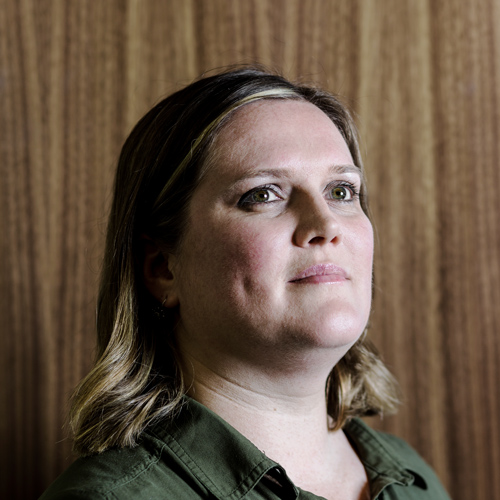At the conception of a project in Times Square, Lightstone Group wanted to bring a new style, speed, and sensibility to the heart of New York City. And it did so by partnering with hotel giant Marriott to introduce its innovative Moxy brand to the iconic midtown Manhattan landmark.
Lightstone Group is a privately held real estate investment company that owns and operates a diversified portfolio of multifamily, office, industrial, hotel, and retail properties. Founded in 1988, the company has been working closely with Marriott to develop the Moxy brand, which was launched in 2014. Moxy Times Square is an energetic alternative to the typical hotel experience, where affordability is never sacrificed for style and comfort. Cozy rooms, immersive social spaces, vibrant restaurants, and lively indoor/outdoor rooftop bars featuring enchanting amusements and epic views lend to the hotel’s innovative design and playful soul.
The flagship Times Square opening, which, as of press time, was slated for summer 2017, follows successful launches around Europe, including Amsterdam, Heathrow Airport in London, Frankfurt, and Vienna.
“With over 600 guest rooms, the Moxy in Times Square will be like a cruise ship, docked in the middle of Manhattan,” says Audra Tuskes, vice president and creative director for Lightstone Group, which will partner with Marriott for three subsequent Moxy locations in New York City in addition to the Times Square property. The rooms will measure about 183 square feet.
“Before now, nobody would do a lifestyle product of this size,” Tuskes says. “There is something for every guest here since we treated Moxy’s components with specific attention, such that each space feels like a unique experience.”
It’s not designed solely for tourists, either. Both Lightstone and Marriott anticipate the Moxy hotels will be a destination for locals, too.
“It will feel authentic and rooted in the neighborhood,” Tuskes says. “Our main audience is the youthful generation beginning to travel. We know they value experiences over material possessions and economy over opulence.”
The brand features a unique quad-bunk room that is an example of how proficient Tuskes is in design with a small-room concept.
“It reminds me of an old European sleeper car because it is well-appointed and cozy,” Tuskes says. “Conversely, the building’s large rooftop at the Times Square location is virtually a bacchanalian playground. It’s also privileged with those ever-stunning views of the Empire State Building.”
Having an eye for design has been a lifelong talent for Tuskes, who grew up in a family of artists and creative professionals. Prior to her career as a creative and design executive, Tuskes worked as an architect. “Creativity is my native language, and I never questioned what I was going to pursue as a career,” she says. “Not because I was forced, but because it was so seemingly clear. After all the education and hard work it took to be an architect, I paused one day and realized that I did not even consider any other profession.”
Tuskes grew up in an ever-present environment of hospitality, as a longtime silent observer of her parents hosting cocktail parties.
“I should have taken a cue from the hospitality paradigm then,” she laughs. “I do not regret leaving my career as an architect one bit. Hospitality is a culmination of so many things that have interested me along the way—working with brands, design, development, real estate, business, strategy, art, math, and cocktails.”
That formula now plays into Moxy’s brand development. The hotels provide communal and public spaces, convenient services such as a 24/7 grab-and-go quick-food service, an enhanced bar experience, and a technology-friendly environment with keyless entry as well as high-speed, complimentary wireless connections.
To further make the Moxy New York City experience more dynamic, Marriott and Lightstone Group teamed up with Tao Group as its food and beverage partner.
“With the Tao Group, you can expect a robust food and beverage offering,” Tuskes says. “There is a unique restaurant, a rooftop bar and nightclub, and a fast casual dining outlet—the ideal trifecta. Though we are located in the epicenter of amenity in Times Square, the hotel is still programmed so that a guest does not have to leave the building if they so choose.”
Despite being in the middle of the hustle and bustle of midtown Manhattan, Lightstone took an antithetical route in designing rooms to ensure they maintained a sense of calm and provided a respite from the energy of the city itself.
“Location absolutely matters, so when you are in an amazing urban environment like New York City, how much time do you really want to spend in your room? This is a constantly evolving question that we will continue to explore as we develop the other properties,” Tuskes says.
A diligent team made progress toward the summer grand opening. Two interior design firms are separately designing the hotel space and food and beverage venues.
“Each entity of the design team has an exemplary reputation in the hospitality industry and has been extremely flexible in implementing new ideas as they come along,” Tuskes says.
One of the ideas that continues to evolve examines the increased presence of mobile devices and applications used for hotel check-ins. Along with implementing best practices regarding mobile hotel check-in, Tuskes and her associates already see technology trends that could influence how guests check in in the near future.
“We do not want our lobby to turn stale in a couple years, so we thought about that during the design process,” Tuskes says. “Everything in New York City is smaller because of the space restrictions, but we still try to accommodate all needs. We are doing the best with the information we have and all of our hard work will result in a high-quality, unique guest experience.”


